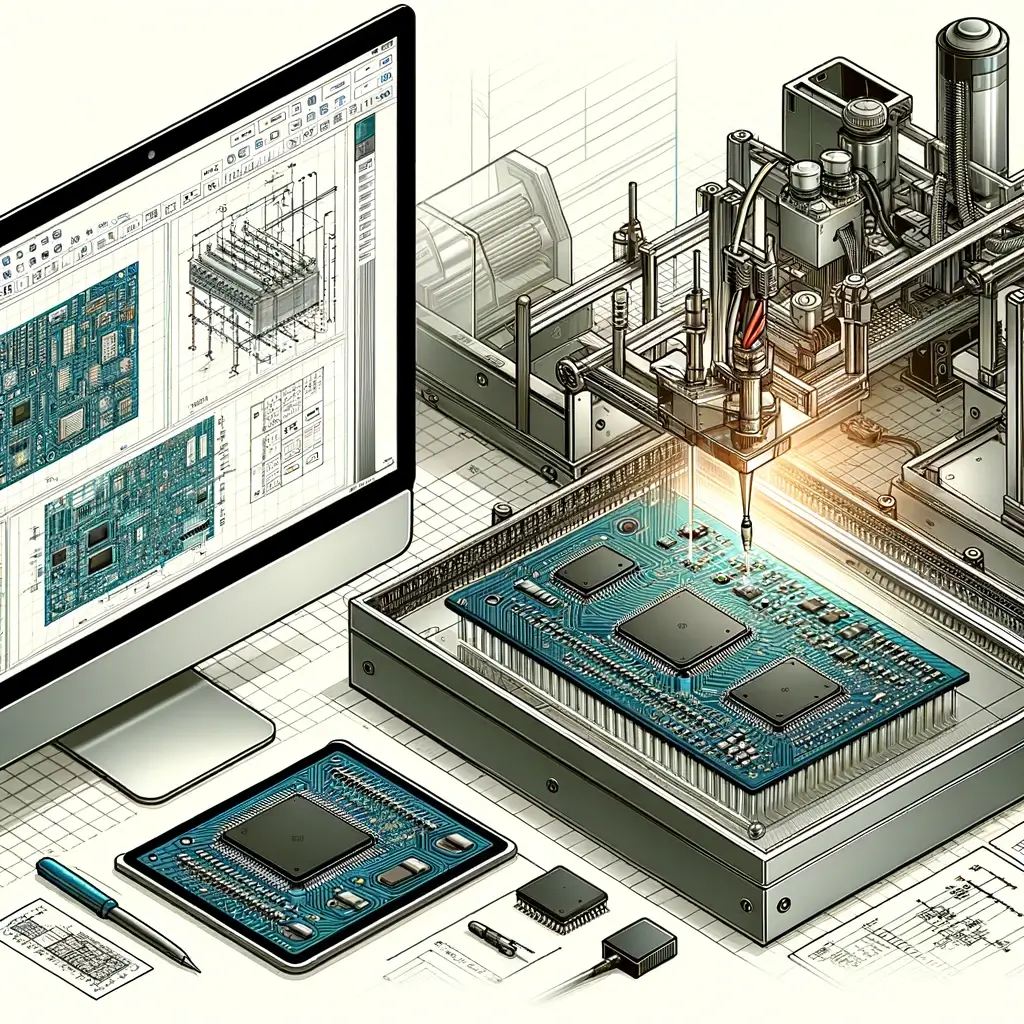Printed Circuit Board Manufacturing Process
Hitech Circuits Co., Limited
Source from : http://www.china-pcb-manufacturing.com
E-mail: [email protected]
Keywords:
China PCB Manufacturer, Aluminium pcb, Metal core pcb, High density PCB, High Density Interconnect PCBs (HDI PCBs), HDI board, Heavy copper board, PCB manufacturing, Quick turn PCB, China PCB fabrication,Hitechpcb.
The printed circuit board manufacturing process is a difficult and complex series of operations to make a printed circuit board. Hitechpcb’s years of experience in manufacturing circuit boards has made us a preferred supplier of printed circuit boards for industry leading OEM’s and Electronic Contract Manufacturers since 1999.
We believe that by sharing our knowledge of the manufacturing process you will not only better understand the steps we take to manufacture a printed circuit board but also see the importance of each step in the process. We believe you will see why Hitechpcb’s offers the best in quality, customer service and on time delivery for you.
The Printed Circuit Board Manufacturing Process:
The process starts once your files and specifications have been sent to Hitechpcb s. Our engineers review each order to ensure design for manufacturability and proper selection of materials and technologies before manufacturing begins.
Patterning | Etching
The majority of printed circuit boards are manufactured by applying a layer of copper over the entire surface of the circuit board substrate either on one side or both sides. This creates what is referred to as a blank printed circuit board, meaning the copper is everywhere on the surface. From here the unwanted areas are removed, this is called a subtractive method, the most common subtractive method is known as photoengraving.
Photoengraving
The photoengraving process uses a mask or photomask combined with chemical etching to subtract the copper areas from the circuit board substrate The photomask is created with a photoplotter which takes the design from a CAD PCB software program. Lower resolution photomasks are sometimes created with the use of a laser printer using a transparency.
Lamination
Many printed circuit boards are made up of multiple layers, these are referred to as multi-layer printed circuit boards. They consist of several thin etched boards or trace layers and are bonded together through the process of lamination.
Drilling
Each layer of the printed circuit board requires the ability of one layer to connect to another, this is achieved through drilling small holes called “VIAS”. These drilled holes require precision placement and are most commonly done with the use of an automated drilling machine. Theses machines are driven by computer programs and files called numerically controlled drill or (NCD) files also referred to as excellon files. These files determine the position and size of each file in the design.
Some files require very small vias to be drilled which results in heavy wear and tear of the drill bit itself. Drilling through different substrates may require the drill bit to be made of tungsten carbide and are costlier than other materials but required to provide a proper hole.
Controlled depth drilling can be used to drill just one layer of the circuit board rather than drilling through all the layers. This can be accomplished by drilling the individual sheets or layers of the PCB prior to lamination.
Blind Vias : Is when the holes connect a layer to the outside surface
Buried Vias : Is when the holes only connect interior layers and not to the outside surface.
The walls of each hole (for multi-layer boards) are copper plated to form plated-through holes that connect the conductive layers of the printed circuit board.
Solder Plating | Solder Resist
Pads and lands which will require components to be mounted on are plated to allow solderability of the components. Bare copper is not readily solderable and requires the surface to be plated with a material that facilitates soldering. In the past a lead based tin was used to plate the surfaces, but with RoHS compliance enacted newer materials are being used such as nickel and gold to both offer solderability and comply with RoHS standards.
Areas that should not be solderable are covered with a material to resist soldering. Solder resist refers the a polymer coating that acts as a mask and prevents solder from bridging traces and possibly creating short circuits to nearby component leads.
Silk Screen
When visible information needs to be applied to the board such as company logos, part numbers or instructions, silk screening is used to apply the text to the outer surface of the circuit board. Where spacing allows, screened text can indicate component designators, switch setting requirements and additional features to assist in the assembly process.
NOTE: “Red Print” refers to the silk screening of a one sided printed circuit board.
Testing
Unpopulated circuit boards are subjected to a bare board test where each circuit connection (as defined in a netlist) is verified as correct on the finished circuit board. In high volume circuit board production, a bed of nails tester or fixture is used to make contact with the copper lands or holes on one or both sides of the board to facilitate testing. Computers are used to control the electrical testing unit to send a small current through each contact point on the bed of nails and verify that such current can be detected on the appropriate contact points.
For small to medium volume production runs, a flying probe tester is used to check electrical contacts. These flying probes employ moving heads to make contact with the copper lands and holes to validate the electrical connectivity of the board being tested.



